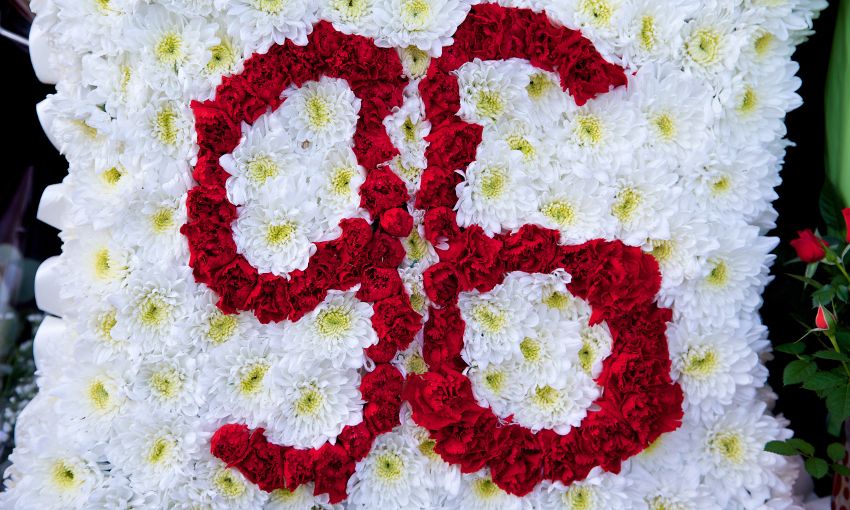Hillsborough inquests - October 16
The Hillsborough inquests commenced on March 31, 2014 and are the subject of reporting restrictions that have been imposed by the Attorney General's office. Liverpool Football Club is respectful of these restrictions and will therefore only be making available updates from other media channels for the duration of the inquest.

The report below - and the witness testimony contained within it - does not necessarily reflect the views of Liverpool FC. Please be aware that the reports on these pages will contain evidence about the day of the disaster which may be distressing.
To view archive reports from each day of the inquest hearings, click here.
Courtesy of the BBC - October 16
A doctor and a policeman helped revive the last of the 96 Hillsborough victims on the pitch before he was rushed to hospital, a jury has heard.
The inquests focused on the final movements of Tony Bland, who was left severely brain damaged by the 1989 crush but lived until 1993.
He was left in a persistent vegetative state but his life supporting treatment was removed after a legal battle.
Mr Bland was 18 at the time of the disaster but died aged 22.
The court heard the teenager, from Keighley, West Yorkshire, attended the FA Cup semi-final between Liverpool and Nottingham Forest on 15 April 1989 with a friend, Allan Gill.
They entered the Sheffield stadium at about 14:25 BST and made their way to a central terrace enclosure known as pen three at the Leppings Lane end.
Mr Gill said the crowd "seemed to really tighten up" when the players came onto the pitch.
He said he heard screams and shouts from people saying they could not breathe and needed to get out of the pen.
In evidence read to the court, he said he did not see Mr Bland from that point on and that he eventually fell forward and was pulled through a gate.
Footage showed Mr Bland, wearing a red and white Liverpool hat, being lifted over a fence into pen two and then being carried onto the pitch by two police officers at about 15:23 - more than 15 minutes after the match was halted.
PC Steven Plows and a doctor, Colin Flenley, who was at the ground as a fan, said they thought Mr Bland had no pulse and was not breathing when they first attended him.
They eventually detected a heartbeat at 15:26 after several rounds of heart compressions and Mr Bland was put into the back of a St John Ambulance seven minutes later.
The jury heard there were already three casualties inside, with one unconscious adult on the floor, and that Mr Bland was placed on top of him.
PC Paul Jenkinson told the court that he performed mouth-to-mouth on Mr Bland en route to Sheffield's Northern General Hospital and that the casualty began breathing as they arrived.
He said: "I am fairly sure it was before he went on the trolley because I seem to have got this feeling of relief that we pulled into the hospital and... he was going to get some proper medical attention."
Rani Naidoo, a senior house officer at the Northern General's gynaecology department at the time, went to assist in A&E after she heard "a number of sirens and ambulances coming up the hill".
She said she attended Mr Bland "because there was no other medical or nursing staff with him".
Dr Naidoo said she had not been told that a crush had taken place at Hillsborough and recalled an unidentified person telling her they thought a stand had collapsed.
Hospital notes recorded Mr Bland as being unconscious on arrival and "unresponsive to painful stimuli".
Breathing was spontaneous but "laboured", it was added.
She said she judged him "stable" following her initial assessment and thought he did not require any further intervention at that point as his observations were "reasonable and satisfactory".
Christina Lambert QC, counsel for the coroner, asked her: "Did you believe that there was any need for steps to be taken to either secure Tony's airway or indeed to provide him with assisted ventilation?"
She replied: "I believe at that time my assessment was that his condition was stable. He was breathing by himself spontaneously."
The jury was told that Mr Bland was first transferred to a general ward for ongoing care at the Northern General, rather than the intensive care unit (ICU).
Asked if she was concerned that he was not transferred to ICU, Dr Naidoo said: "Well, it was a very extraordinary day.
"I was aware there were a significant number of extremely ill casualties in the A&E department, all receiving varying levels of care."
Mr Bland was later intubated and ventilated on the receiving ward by other clinicians before his condition deteriorated and he was eventually taken to the cardiac ICU.
At about 18:00 it was noted that ventilation was "becoming harder" and emergency intervention was needed, the court was told.
The hearing was adjourned until Monday.



